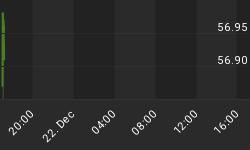If you recall, last week's update was centered around the question of: "Thinking about doing a refi on your current mortgage?"
A week has now gone by. Our comments last Friday were: "Note that last week, the yields bottomed out and started moving higher. That set a "higher/low" in place where the yields should start moving up more aggressively now. The 53 yield target would have mortgage rates move up approximately 2/3's of a percent higher from where they are now."
What has happened in a week?
Both in trouble, Fannie Mae and Freddie Mac have announced that they will cut the number of mortgages that they buy from banks. That will cause a big problem for the banks. The reason is that many banks only keep their best 10 and 15 year mortgages and sell all their 30 year mortgages. If Freddie and Fannie are going to buy fewer mortgages, then banks will place fewer mortgages. Mortgages will be harder to get, and harder to qualify for. Lower supply will have an upside pressure effect on mortgage rates.
Add one more element ... banks are getting really scared. Here's why: There was a total of 739,714 foreclosure filings in the past quarter. With 91 days in the quarter, that comes out to 8128 foreclosure filings per day during the last quarter. The mortgage business is becoming riskier, and money flows to lower risk opportunities as every investor knows.
At the same time, housing values are dropping, which adds risk for any bank placing a mortgage. Many mortgages have gone "upside down", meaning that the value of the home is now less than the mortgage amount owed to the bank. This is a high risk situation for the banks as there is no equity buffer to mitigate their potential loss should a home owner default on payments ... remember that there was 8128 foreclosure filings per day last quarter. If that was the business you were in, you would be starting to panic right about now.
This is not an environment that is motivating banks to be aggressive about mortgage lending. Instead, we have an environment where financial institutions are starting to become very "risk averse" ... even consumers are doing the same. One recent poll showed that over 50% of Americans are changing their spending habits, trying to pay off credit cards, and eating out less ... so, consumers are becoming "risk averse" as well.
What's the bottom line? Conditions are not going to improve in a hurry. In fact, they are more likely to get worse before they get better.
If you are not already doing it, be more conservative in your spending, more aggressive in your debt payments, and rediscover the joys of spending time with your family outdoors instead of going to that movie theater down the street.
With that said, let's take a look at the 30 year bond yields as of yesterday.
This is a chart of the 30 year bond yields (Symbol: TYX). Mortgage rates follow the 30 year yields with a markup.
Note that the 30 year yields made an inverted Head & Shoulders pattern. Technically, that means that the yields have a projected upside target of 53.
Note that two weeks ago, the yields bottomed out and started moving higher. That set a "higher/low" in place where the yields should start moving up more aggressively. The 53 yield target should have mortgage rates move up to approximately 6.78% to 7% in the coming weeks or months. (Rates were 6.125% to 6.25% when we first posted this warning.) (Note: This chart is posted every day on our paid Advance subscriber site.)
















